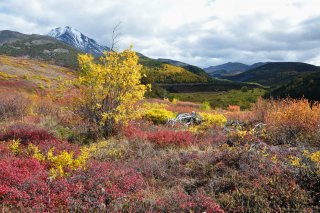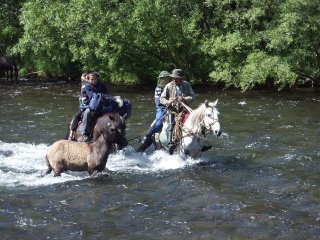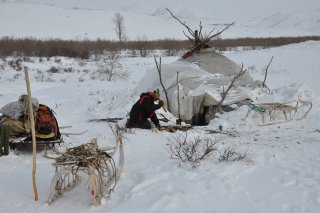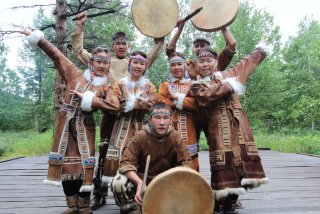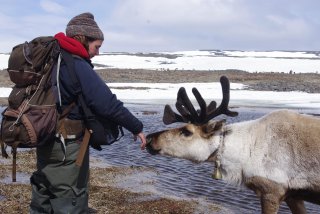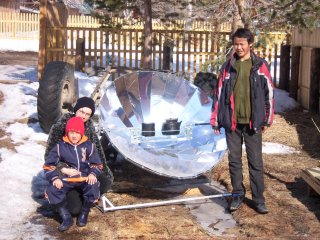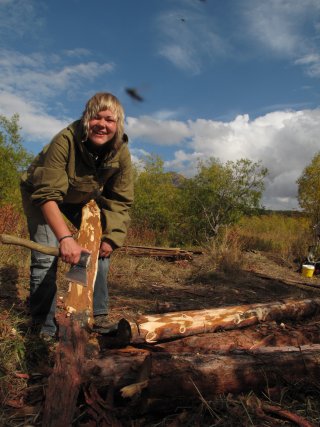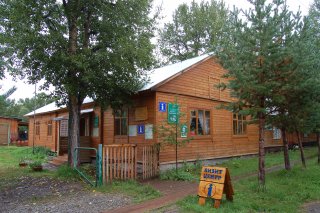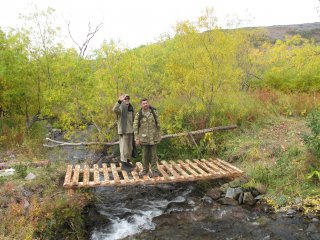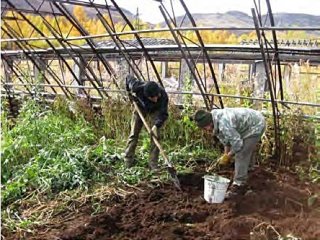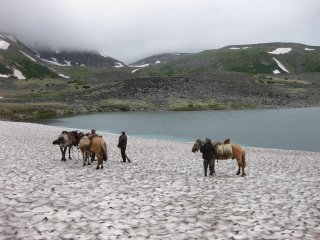Bystrinsky Nature Park in Kamchatka
and our Voluntary programme in the Russian Far East
You have to travel far to find a place where large wilderness areas still predominate. Kamchatka, the peninsula in Russia’s Far East, is such a place. Kamchatka - 1.5 times the size of Germany - impresses its visitors with the large Pacific forests, boggy taiga and clear creeks and rivers. Volcanic activities and diverse coastlines give a special note to the landscape of Kamchatka. Its nature is of high ecological value due to the diversity of its species and ecosystems.
The foundation Manfred-Hermsen-Stiftung supported the "Bystrinsky Cluster” in the Nature Park “Volcanoes of Kamchatka” through a Russian-German volunteer programme organised together with the nature park administration, and also provided content-related and financial support in individual projects in the field of nature conservation and environmental education. The European Voluntary Service was co-financed by the EU programmes "Youth in Action" and ERASMUS+. Over 50 volunteers participated over the years. Since 2017, our engagement has been on hold due to the political developments in Russia.
Background
Owing to its inaccessibility and its use as military training area, access to Kamchatka had been restricted for strangers and foreigners until the collapse of the Soviet Union. Consequently, nature was able to flourish without significant human impact. Since 1990, Kamchatka has been increasingly exposed to human pressure. Foreign fishery fleets have been acquiring licences and are over-fishing the coastal zones; mineral resource exploration and mining – which is very detrimental to the environment – have started. In parallel, transport infrastructure has been upgraded considerably, which eases access not only for tourists but for poachers too, even to remote areas.
The main focus of our Kamchatka activities related to the support of the "Kamchatka Volcanoes" Nature Park, with a regional emphasis on the "Bystrinskij" Nature Park Cluster in Central Kamchatka. The Bystrinskij cluster is the largest protected area on the peninsula with an area of a good 1.3 million ha (almost as large as Schleswig-Holstein). 
Our support in the Bystrinsky Nature Park since 2004
We assisted the Bystrinsky Nature Park in the fight against poaching through various activities within an overall park concept and focused on the issues of park monitoring, environmental education and ecotourism. This included contributions to the infrastructure with the construction of ranger huts, the development of a tourist trail system, the establishment of a visitor centre, and mobility (financing of a four-wheel drive vehicle). In addition, our volunteers helped with flora & fauna surveys.
In 2005 an ecological children and youth club has been founded to raise awareness for nature conservation and to provide environmental training for children and adults. The activities of the children's club included excursions to the Bystrinsky Cluster of the nature park, environmental teaching, film presentations on environmentally relevant topics, as well as cooperation with the school in Esso and natural history experts from all over Kamchatka. Since 2010 a former volunteer and later employee of our foundation, Larisa Kravcova, managed the children’s club. She received financial support not only from the MHS but also from the NGO Pacific Environment for her work with the children and young people in Esso.
Main focus of the Foundation's commitment: the volunteer programme
Since 2006, our support has specialised in a volunteer programme. Interested young people were given the opportunity to gain experience in nature and nature conservation in a very foreign, yet beautiful and extreme area through a longer internship in the Bystrinsky Nature Park. Not only did they get to know a foreign country, life and the special features of a nature park in Kamchatka, but they were also encouraged to develop their own skills, to be creative and to practice tolerance. The volunteers and their activities aroused curiosity and interest among the local population. In this way, different life stories and attitudes to life met, the volunteers and locals exchanged ideas and learned from each other.
The volunteers, coming from German-speaking countries, have left their mark on the nature park according to their skills. They brought the visitor centre to life with information posters, interesting exhibits, a play corner and a slide show on the visitor computer. In addition, they produced information brochures on the hiking trails in 3 languages, hiking maps and postcards, initiated the construction of adventure trails, marked hiking trails and contributed to the creation of the homepage. Botanical descriptions of the hiking trails were also prepared and a herbarium was created. The volunteers helped with a wide variety of construction work in the nature park, which included building shelters, huts, composting toilets and fireplaces. They also regularly offered free German and English lessons to local children and adults, which were very popular and intensified the cultural exchange.
Since 2008, our volunteer programme received support from the EU programme "Youth in Action", followed by the EU programme ERASMUS+ in 2014. In this context, the German-speaking volunteers took part in the European Voluntary Service (EVS). Partly due to this support, we were able to send additional young experts from Russian-speaking countries. In this way, we promoted exchange and cooperation between Russian and German volunteers and supported the promotion of of future professionals in the nature park.
Gradually, direct nature conservation tasks were added to the main activities of the volunteers. In cooperation with other volunteers and nature park staff, botanical and faunal inventories as well as mapping of bird populations, among others, have been carried out, and an extensive monitoring programme has been initiated. The volume "Flora & Fauna of the Bystrinsky Nature Park" published in 2015 by the Ministry of Education and Science of the Russian Federation contains some contributions by our volunteers. Here you can see an excerpt with translation of the synopsis.
Our volunteer Aiva Lace, from Belarus, started a research project on migration routes and resting places of reindeer herds in 2014. She documented traditions and lifestyles of the nomadic Even and Koryak people, who live and work in the territory of the Nature Park. Insights into the life and needs of the nomads created a better understanding with the park management and offered opportunities for tourist encounters within the framework of visitor management in the park. More on this can be read in her reports from 2014 and 2016: "Reindeer herders' route Mapping project".
Further research reports written by our volunteers:
Stefan Siegel: "Investigation of the avifauna of the Bystrinskiy Nature Park, Kamchatka" [in German].
Maude Erasmy: "Monitoring of rare or threatened plant species in the Bystrinsky Cluster, Nature Park 'Vulkani Kamchatki'".
Christoph Kunkel: "Vegetation in the Bystrinsky Nature Park" [in German].

